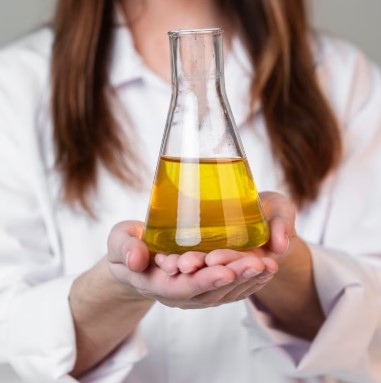- Definition and Types of Energy
- Myths And Misconceptions About Energy
- The Relationship Between Energy and Environment
- Climate Change and Carbon Footprint
- Greenhouse Gas Effect
- The Role of Human-Induced Greenhouse Gases and Energy Consumption
- Energy Efficiency and Sustainability
- Renewable Energy Sources and Future Perspectives
- Play and Learn
- Solar Energy Conversions
- Solar Energy Worldwide
- Solar Energy in Partner Countries
- Positive and Negative Impacts
- Technologies for Harnessing Solar Energy
- Solar thermal energy technologies and applications
- Electricity Generation Methods
- Passive Heating and Cooling of Residences with the Sun
- Concentrator solar power (CSP) systems and electricity generation
- Systems and Applications That Generate Electricity directly from solar rays
- Photovoltaic Cells and Panels
- Domestic PV Systems
- Off-Grid PV Systems
- Hybrid Connected Systems
- Materials Used in PV Cells
- Play and Learn
Uses of Bioethanol
Bioethanol can be evaluated in different ways in various energy systems:
- It can be used directly as an alternative motor fuel.
- It can act as a fuel additive by mixing with gasoline in certain proportions.
- It can be used as an energy source in fuel cells.
- It can be used as a raw material in the production of biodiesel.
Gasoline and Diesel Blends of Bioethanol
Fuel types containing bioethanol in different proportions are used around the world:
Gasoline with added alcohol (contains up to 5% alcohol).
Gasohol (10% ethanol, 90% gasoline blend).
E85 (a mixture containing 85% ethanol, 15% gasoline).

Advantages
- It is a sustainable fuel because it is produced from renewable resources.
- It contributes to energy security by reducing oil dependency.
- It offers an environmentally friendly option by reducing greenhouse gas emissions.
- By increasing the octane number, it helps the fuel burn more efficiently and cleanly.
- It improves engine performance and does not harm nature thanks to its biodegradability.
Bioethanol production

The production of bioethanol is carried out by passing lignocellulosic biomass through certain stages. This process consists of four basic steps. The first step is the separation of lignin, hemicellulose and cellulose by pretreating the biomass. This stage involves the breakdown of biomass to make the hydrolysis process more efficient.
In the second step, cellulose and hemicellulose are decomposed into monomer sugars by enzymes or chemical methods. In the third stage, the sugars obtained are fermented with the help of microorganisms such as yeast and converted into ethanol. In the last stage, ethanol is condensed by distillation and purification processes.
In biomass used in ethanol production, the pretreatment stage is very important. This stage involves cleaning the biomass, separating it according to its size, and making it more accessible in the biochemical processes that proceed. Mechanical and physical processes applied during pretreatment disrupt the internal structure of biomass and increase sugar yield. Each type of raw material (e.g., softwood, corn cob or bagasse) needs different pretreatment methods to achieve optimal yields.
In facilities where bioethanol is produced from molasses and dark syrup, dark syrup and molasses are fed into the fermentation tank together with yeast. After the fermentation process is completed, bioethanol is obtained by performing distillation, rectification (dewatering) and separation processes, respectively.